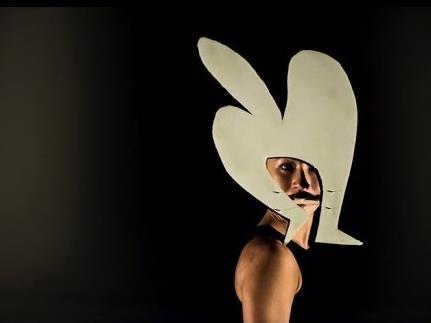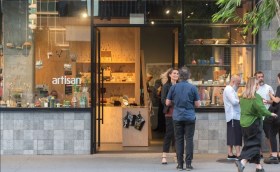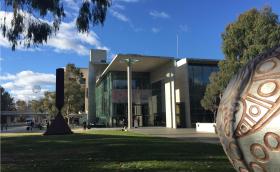In the recent Australia Council overhaul, Aboriginal and Torres Strait Islander organisations are ‘big winners with 17 organisations funded.’
However, why does the Australian arts sector have little to no knowledge of our Indigenous peak bodies?
Australia’s current Indigenous peak bodies include; Indigenous dance, BlakDance, and Indigenous visual arts peak bodies; Desart, UMI Arts and Arnhem Northern and Kimberley Artists Aboriginal Corporation (ANKA), have been operational for over a decade. ANKAAA has been operational since 1987, Desart since 1992 and BlakDance and UMI arts since 2005. First Nations Writers Network (FNAWN) and newly formed Blackfulla Performing Arts Alliance (BPAA) receive project funding from the Australia Council for the Arts and various states and territories funding agencies. Yet as far as the mainstream arts sector goes, they may as well not exist. Why?
Many of our achievements over the years have gone unnoticed by the wider arts sector. It is time for our Indigenous arts bodies to be celebrated.
Why do we need Indigenous peak bodies in the arts? The answer is relatively simple; the same reason we need non-Indigenous peak bodies.
We must have our own national and State and Territory based peak bodies’ because there are specific outcomes to the Indigenous sector that the mainstream Australian arts sector cannot deliver. For example, our peak bodies work hard to profile Indigenous artists who remain largely invisible to many presenters, publishers, curators and gallerists.
In December 2015, BakDance held an unprecedented convergence of Indigenous choreographers and presenters, Dana Waranara. Bringing together the sector in this way enabled the transformation of the small to medium contemporary dance touring ecology.
Reflecting on Dana Waranara, Simon Hinton, Artistic Director and CEO of Merrigong Theatre wrote:’ Dana Waranara…highlight(ed) the incredible work that Indigenous artists are doing around the country, and the need for us to…connect that work with our audiences.’
Our peak bodies provide crucial support for artists who come from the very lowest socioeconomic demographic.
Our peak bodies run programs that strengthen and build the capacity of our people to deliver Aboriginal and Torres Strait Islander culture and arts nationally and internationally.
Importantly, Indigenous peak bodies also provide a presence in safeguarding, maintenance and conservation of our traditional cultural knowledge, expression and intellectual property. For many Aboriginal and Torres Strait Islander people, knowledge is intrinsically linked to cultural responsibility and obligation. Multiple hierarchical layers of knowledge are made available to people as they demonstrate the ability to be able to ‘handle’ the knowledge with responsibility and respect. This precedes and sits outside the terms of cultural expression in a Western market economy. Indigenous peak bodies assist in bringing audiences closer to understanding artists work in this way, such as with culturally appropriate advice on pre and post information and educational material. Furthermore, Indigenous peak bodies serve to counter the colonial constructed image of oneness of our cultural expression, working to highlight and celebrate the diverse Aboriginal and Torres Strait Islander cultures in all their differences.
These roles are crucially important in contributing to a national dialogue around Australia’s identity in the 21st century. It’s no longer acceptable for Indigenous arts to be presented, curated, programmed, directed, written, choreographed, or produced without Indigenous people being in the key creative roles.
In the past few years, this has lead to a momentum in the Aboriginal and Torres Strait Islander Arts and Cultural sector to building a framework for a National Aboriginal Arts and Cultural Authority (NIACA), which will become a body that has independence and which reflects First Nations self determination in all matters artistic and cultural.
Because we govern our own peak bodies, Indigenous peak bodies are self-determining. They promote Aboriginal and Torres Strait Islander sovereignty. This is important because Australia is unceded territory. This is unsettling to some Australians. But it’s 2016; even state government is putting Treaty and Sovereignty Talks on the table.
In 2009 Australia became signatory to the United Nations Declaration on the Rights of Indigenous Peoples. This declaration contains commitments to ensure the government provides redress and compensation for losses caused by colonisation. There is also an equal amount of emphasis placed on Indigenous peoples accessing and participating in arts and culture autonomously from government. This very significant commitment should not be taken lightly, and makes clear a crucial role of Indigenous peak bodies to hold the Australian government and people accountable to what they supported and signed up to in 2009.
Our peak bodies play a very important role in Aboriginal and Torres Strait Islander Culture, both traditional and contemporary practice. Australia loves to remind people that we have the world’s oldest living and surviving culture. Yet these words are empty if the very people who are the original custodians and keepers of these ancient traditions and practices are not the central voice to its representation.
If we can manage to ensure a thriving Indigenous arts scene despite the ability and success of our sector to deliver this for years off the sniff of an oily rag, then we should be a shining example of how to do business within the broader arts sector.
If we as a nation wish to continue to positively exploit Aboriginal and Torres Strait Islander art and culture, we’d do well to think about our peak bodies as vital and significant organisations that all Australians should know and cherish.






